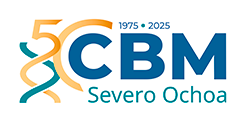Scientific Program
Interactions with the environment
RESEARCH GROUP
ssDNA VIRUS EVOLUTION, PATHOGENESIS, and ANTI-CANCER POTENTIAL
ssDNA Virus Evolution, Pathogenesis, and Anti-cancer Potential.
We investigate the molecular biology of ssDNA viruses, with special emphasis in virus members of the Parvoviridae, to understand their evolution patterns, mechanisms underlying pathogenicity, virus life cycle steps, and oncolytic potential against human cancer.
Research
We investigate the molecular biology of ssDNA viruses, with special emphasis in virus members of the Parvoviridae, to understand their evolution patterns, mechanisms underlying pathogenicity, and oncolytic potential against human cancer.
Pathogenicity.
In these studies, we combine mice infections with sequence analysis of the parvovirus Minute Virus of Mice (MVM) genetic variants arising at precise stages of the caused diseases. The evolutionary capacity of this virus in response to immune and adaptive pressures is monitored by genome sequencing. This allows at certain cases to localize the selected amino acid changes at defined functional domains of the 3-D capsid structure.
Parvovirus MVM life cycle.
The preferent infection capacity of cancer cells (oncolysis) by MVM is being addressed by an in-depth analysis of the virus life cycle steps in human cancer cells, aimed at identifying regulators and precise molecular interactions at each major virus life cycle stage. Hence, we demonstrated that capsid assembly proceeds as trimeric intermediates that translocate through the nuclear envelope at the S phase of the cell cycle, and this nuclear transport competence relies on the phosphorylation at specific sites of the protein subunits mediated by the Raf-1 kinase (MAPK route) commonly deregulated in cancer cells.
One aspect of MVM life-cycle regulation of particular interest for its oncolytic capacity is the dependence of S-phase on the transport of capsid subunits, and thus on the nuclear assembly of the virus. This coupling is relevant for understanding parvovirus pathogenesis and tropism for proliferative cells. Its disturbance may determine viral persistence in host tissues.
Anti-cancer applications of the parvovirus MVM.
The anti-cancer therapeutic potential of the MVM was shown by its capacity to infect and eliminate cancer stem cells obtained from glioblastoma patients (the most aggressive brain tumor) implanted in the brain of rodent models. In neurospheres the MVM targets its cytotoxic action exclusively against those cells that have altered both innate responses and the central regulator p53 by mutation or aberrant phosphorylation, in a patient-dependent manner. These results raise hopes for a new personalized and biosafe medicine, based on viruses that selectively infect malignant stem cells, that could be used in therapies against this devastating type of cancer and against others carrying deregulated p53 signaling.
Other ongoing approaches in our lab to enhance MVM oncolysis tackle re-targeting the virus to the neovascularization process required for tumor growth. We are engineering different domains of MVM capsid with heterologous peptides blocking VEGF, to either induce antibodies that may reduce tumor growth, or to drive the tropism of the virus specifically to VEGF-R expressing vascular cells supporting the tumor vascularization.
MVM evolution confers advantageous anti-glioblastoma properties.
We are attempting to increase MVM tropism for cancer cells through multiple experimental strategies: (i). Under natural evolution in mice, MVM variants arise that contain amino acid changes in a “dimple” at the 2-fold axis of symmetry of the capsid. Some of them modulate the binding affinity for the sialic acid (sia) cell receptor and show improved infectivity of glioblastoma cells. The molecular basis of this enhanced onco-tropism is related to an important effect of the sia-type contacts on the endocytic traffic of the virion. (ii) We have developed serveral directed evolution strategies in vitro, based on the generation of MVM libraries by mutagenesis ( error-prone PCRs or saturation of precise codons) of the cellular receptor binding site and subsequent adaptation to glioblastoma cells through serial passages. The goal is to retarget MVM capsids toward sialoglycans preferentially expressed in glioblastoma cell lines. Some of the recombinant viruses engineered with the selected mutatnions replicate and propagate better than the wild type virus in the U373 glioblastoma cell line. (iii) Finally, we are fostering genetic recombination between the MVMp and MVMi strains by high multiplicity of co-infection of permissive cells. Oncotropic chimeric viruses emerged spontaneously in these cultures and are subjected to selection in U373 cells. One of the resulting viruses displays chimeric nonstrutural proteins and produce more viral genomes in U373 than the two parental strains, suggesting an enhanced oncotropism.
Group members

José Mª Almendral del Río
Lab.: 224 Ext.: 4559
jmalmendral(at)cbm.csic.es

Alberto López Bueno
Lab.: 224 Ext.: 4589
alopezbueno(at)cbm.csic.es

Pedro Arroyo Gil
Lab.: 224 Ext.: 4589
pedro.arroyo(at)cbm.csic.es

Alejandro Fernández Llorente
Lab.: 224 Ext.: 4559
alejandro.fernandez(at)cbm.csic.es

Jorge Martínez Ortega
Lab.: 224 Ext.: 4589
j.martinez(at)cbm.csic.es

Marina María García Rodríguez
Lab.: 224 Ext.: 4559

Elena Suárez Trujillo
Lab.: 224 Ext.: 4589
Selected publications
The Mammalian Cell Cycle Regulates Parvovirus Nuclear Capsid Assembly
Jon Gil-Ranedo et al.
Evaluation of bias induced by viral enrichment and random amplification protocols in metagenomic surveys of saliva DNA viruses
Marcos Parras-Moltó et al.
Viral targeting of glioblastoma stem cells with patient-specific genetic and post-translational p53 deregulations
Jon Gil-Ranedo et al.
Intracellular virion traffic to the endosome driven by cell type specific sialic acid receptors determines parvovirus tropism
Tania Calvo-López et al.




